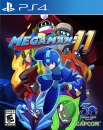LegitHyperbole said:
The contruction of a simulation. Add in Ai with physics based worlds and we'll have to seriously sit down and cosider the ethical implications. I wouldn't be surprised if we were in a video game and this is how new universes are born. |
Yes, pretty much - once you have worlds that are represented via volumetric "grid" of "space" (whatever that grid is, be it tiny voxels or something else), and every coordinate in space has its properties and interacts with other points in space via set of physical laws, you get to the point of game development where putting a wooden door somewhere, is like putting a wooden door in our world - door will react in the similar way it reacts reacts IRL, and getting it hacked by an axe is not a matter of developer making a code for it, but the door reacting to physical laws of that world. I think this (along with AI agents) will change how a lot of games are designed at the fundamental level.
























































